Posted on April 4th, 2010 by Jaimie Schock
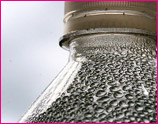 This activity for grades 6-8 provides students with the opportunity to create a food package for a specific food. The students have three components to focus on in the design of their food package. The package will have to keep the food clean, protect or aid in the physical and chemical changes that can take place in the food, and identify the food appealingly.
This activity for grades 6-8 provides students with the opportunity to create a food package for a specific food. The students have three components to focus on in the design of their food package. The package will have to keep the food clean, protect or aid in the physical and chemical changes that can take place in the food, and identify the food appealingly.
Read More
Filed under: Class Activities, Grades 6-8, Grades 6-8, Lesson Plans | 2 Comments »
Tags: Class Activities, Curriculum, Packaging Engineering
Posted on March 30th, 2010 by ASEE

The Infinity Project offers national middle school, high school, and early college engineering curricula. Created to help students see the real value of math and science and its varied applications to high tech engineering, this math- and science-based engineering and technology education initiative promises to help educators deliver engineering with a minimum of training, expense, and time. Element of the program include: the Engineering Our Digital Future textbook; the Infinity Project Technology Kit; and comprehensive Professional Development Institutes for teachers. Visit the Website to learn more about the different elements of the program, and to read the blog and newsletters.
Read More
Filed under: Web Resources | Comments Off on Curriculum: The Infinity Project
Tags: Curriculum
Posted on March 29th, 2010 by Jaimie Schock
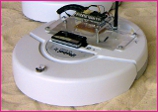 The Learning Roomba educational toolkit attempts to address robotics usability issues by keeping total costs down while making the tools as easy to use as possible. This toolkit is a collection of resources and tools to facilitate teaching robotics to pre-college students. Through these resources, students can learn about science, math, and engineering topics in a fun and exciting way.
The Learning Roomba educational toolkit attempts to address robotics usability issues by keeping total costs down while making the tools as easy to use as possible. This toolkit is a collection of resources and tools to facilitate teaching robotics to pre-college students. Through these resources, students can learn about science, math, and engineering topics in a fun and exciting way.
Read More
Filed under: Class Activities, Grades 6-8, Grades 6-8, Grades 9-12, Grades 9-12, Lesson Plans | Comments Off on Curriculum: Learning Roomba
Tags: Building robots, Class Activities, Curriculum, Lesson Plan, Robotics, Technology for Learning
Posted on March 22nd, 2010 by Jaimie Schock
 Robert Goodman, a science teacher at Bergen County Technical School in Paramus, N.J, always felt that teaching 9th graders biology, but not chemistry and physics, was the wrong approach. So, he devised a curriculum for teaching physics that conformed with 9th graders’ math knowledge. His method is now being piloted in 21 schools.
Robert Goodman, a science teacher at Bergen County Technical School in Paramus, N.J, always felt that teaching 9th graders biology, but not chemistry and physics, was the wrong approach. So, he devised a curriculum for teaching physics that conformed with 9th graders’ math knowledge. His method is now being piloted in 21 schools.
Read More
Filed under: K-12 Education News | Comments Off on Physics Problem Solved
Tags: Curriculum, Education Policy, Physics
Posted on March 15th, 2010 by ASEE
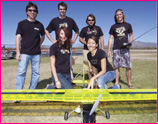
AIAA, dedicated to the global aerospace profession, supports a Website with a number of helpful resources for teachers, including: a 1903 Wright Flyer Simulation, Interactive Activities
Fun Activities, Puzzles & Games, Books & Movies, Homework Help, Engineering Links, and K-12 Curriculum.
Read More
Filed under: Web Resources | Comments Off on Website: Aeronautics and Astronautics
Tags: Aeronautics, Astronautics, Curriculum, Web Resources
Posted on March 8th, 2010 by Jaimie Schock
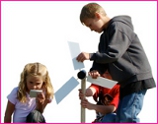 The KidWind Project website offers free resources for teaching about wind power in the K-12 classroom. KidWind offers lesson plans, introductions to key concepts, plans and guides for building model wind turbines, and links to resources around the web. KidWind regularly hosts workshops, events, and conventions, as well.
The KidWind Project website offers free resources for teaching about wind power in the K-12 classroom. KidWind offers lesson plans, introductions to key concepts, plans and guides for building model wind turbines, and links to resources around the web. KidWind regularly hosts workshops, events, and conventions, as well.
Read More
Filed under: Web Resources | Comments Off on Website: KidWind
Tags: Curriculum, Lesson Plans, Science Fair Projects, Web Resources, Wind Energy, Wind Technology, Wind Turbine, Workshops
Posted on March 2nd, 2010 by ASEE
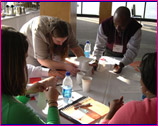 Teachers are invited to join the Everyone Engineers! Workshop being held at the Museum of Science, Boston, May 3-5, 2010. Teachers will learn how EiE curricular materials help meet engineering and technology standards, and will engage in hands-on activities with solar ovens and alarm circuits. Cost: $350 before and $400 after April 20. Registration deadline: April 26, 2010.
Teachers are invited to join the Everyone Engineers! Workshop being held at the Museum of Science, Boston, May 3-5, 2010. Teachers will learn how EiE curricular materials help meet engineering and technology standards, and will engage in hands-on activities with solar ovens and alarm circuits. Cost: $350 before and $400 after April 20. Registration deadline: April 26, 2010.
Read More
Filed under: For Teachers, K-12 Outreach Programs | Comments Off on Teachers Program: Engineering Workshop, Boston, May 3-5
Tags: Boston Museum of Science, Curriculum, Events, Programs for Teachers
Posted on February 22nd, 2010 by Jaimie Schock
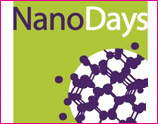 The Nanoscale Informal Science Education Network (NISE Net), which creates activities and materials for its NanoDays programs, has a web page devoted to providing K-12 teachers with valuable tools for teaching nanoscience in the classroom. The web page features links to introductory materials, activity packages from NISE Net, tools for professional development of teachers, college-level lectures and curriculum, and publications about teaching nanotech.
The Nanoscale Informal Science Education Network (NISE Net), which creates activities and materials for its NanoDays programs, has a web page devoted to providing K-12 teachers with valuable tools for teaching nanoscience in the classroom. The web page features links to introductory materials, activity packages from NISE Net, tools for professional development of teachers, college-level lectures and curriculum, and publications about teaching nanotech.
Read More
Filed under: Web Resources | Comments Off on NISE Net Nanotech Classroom Materials
Tags: Curriculum, Nanotechnology, Professional Development, Resources for Teachers, Teacher Resources, Teacher Training, Web Resources
Posted on February 15th, 2010 by Jaimie Schock
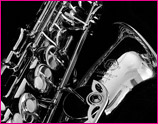 Energy transfer is a central concept in the majority of engineering designs, including designs for musical instruments. In this lesson, students will grasp the concepts of energy and energy transfer, and then apply what they’ve learned by designing and building their own musical instruments.
Energy transfer is a central concept in the majority of engineering designs, including designs for musical instruments. In this lesson, students will grasp the concepts of energy and energy transfer, and then apply what they’ve learned by designing and building their own musical instruments.
Read More
Filed under: Class Activities, Grades 6-8, Grades 6-8, Lesson Plans | Comments Off on Lesson: Energy Transfer in Musical Instruments
Tags: Class Activities, Curriculum, Energy, Lesson Plans, Music engineering
 This activity for grades 6-8 provides students with the opportunity to create a food package for a specific food. The students have three components to focus on in the design of their food package. The package will have to keep the food clean, protect or aid in the physical and chemical changes that can take place in the food, and identify the food appealingly.
This activity for grades 6-8 provides students with the opportunity to create a food package for a specific food. The students have three components to focus on in the design of their food package. The package will have to keep the food clean, protect or aid in the physical and chemical changes that can take place in the food, and identify the food appealingly.









 The Learning Roomba educational toolkit attempts to address robotics usability issues by keeping total costs down while making the tools as easy to use as possible. This toolkit is a collection of resources and tools to facilitate teaching robotics to pre-college students. Through these resources, students can learn about science, math, and engineering topics in a fun and exciting way.
The Learning Roomba educational toolkit attempts to address robotics usability issues by keeping total costs down while making the tools as easy to use as possible. This toolkit is a collection of resources and tools to facilitate teaching robotics to pre-college students. Through these resources, students can learn about science, math, and engineering topics in a fun and exciting way. Robert Goodman, a science teacher at Bergen County Technical School in Paramus, N.J, always felt that teaching 9th graders biology, but not chemistry and physics, was the wrong approach. So, he devised a curriculum for teaching physics that conformed with 9th graders’ math knowledge. His method is now being piloted in 21 schools.
Robert Goodman, a science teacher at Bergen County Technical School in Paramus, N.J, always felt that teaching 9th graders biology, but not chemistry and physics, was the wrong approach. So, he devised a curriculum for teaching physics that conformed with 9th graders’ math knowledge. His method is now being piloted in 21 schools.
 The
The  Teachers are invited to join the Everyone Engineers! Workshop being held at the Museum of Science, Boston, May 3-5, 2010. Teachers will learn how EiE curricular materials help meet engineering and technology standards, and will engage in hands-on activities with solar ovens and alarm circuits. Cost: $350 before and $400 after April 20. Registration deadline: April 26, 2010.
Teachers are invited to join the Everyone Engineers! Workshop being held at the Museum of Science, Boston, May 3-5, 2010. Teachers will learn how EiE curricular materials help meet engineering and technology standards, and will engage in hands-on activities with solar ovens and alarm circuits. Cost: $350 before and $400 after April 20. Registration deadline: April 26, 2010. The Nanoscale Informal Science Education Network (NISE Net), which creates activities and materials for its
The Nanoscale Informal Science Education Network (NISE Net), which creates activities and materials for its  Energy transfer is a central concept in the majority of engineering designs, including designs for musical instruments. In this lesson, students will grasp the concepts of energy and energy transfer, and then apply what they’ve learned by designing and building their own musical instruments.
Energy transfer is a central concept in the majority of engineering designs, including designs for musical instruments. In this lesson, students will grasp the concepts of energy and energy transfer, and then apply what they’ve learned by designing and building their own musical instruments.